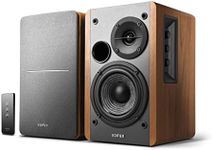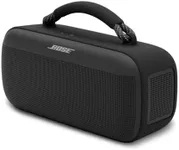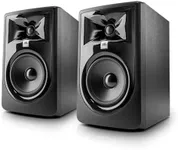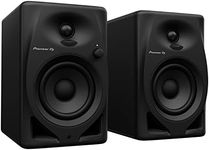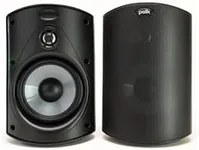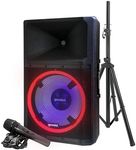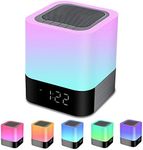Buying Guide for the Best Stereo Speakers
Choosing the right stereo speakers can greatly enhance your listening experience, whether you're an audiophile or just enjoy good sound quality. The key is to understand the various specifications and how they align with your needs and preferences. Here are some important specs to consider when selecting stereo speakers, along with explanations to help you make an informed decision.Frequency ResponseFrequency response refers to the range of frequencies a speaker can reproduce, typically measured in Hertz (Hz). This is important because it determines how well the speaker can handle different types of sounds, from deep bass to high treble. A wider frequency range usually means better sound quality. For example, a range of 20Hz to 20kHz covers the full spectrum of human hearing. If you enjoy bass-heavy music, look for speakers with a good low-end response (20Hz to 50Hz). For classical or vocal music, a balanced mid-range (500Hz to 2kHz) is crucial.
SensitivitySensitivity measures how efficiently a speaker converts power into sound, usually expressed in decibels (dB). This is important because it affects how loud the speaker can get with a given amount of power. Higher sensitivity (90dB and above) means the speaker can produce more sound with less power, making it ideal for larger rooms or outdoor use. Lower sensitivity (below 85dB) may require more power to achieve the same volume, which is fine for smaller spaces or if you have a powerful amplifier.
ImpedanceImpedance is the electrical resistance of the speaker, measured in ohms (Ω). This is important because it affects how the speaker interacts with your amplifier or receiver. Most speakers have an impedance of 4, 6, or 8 ohms. Lower impedance (4 ohms) can draw more power from the amplifier, potentially offering better sound quality but requiring a more robust amplifier. Higher impedance (8 ohms) is easier on the amplifier and is generally more compatible with a wider range of equipment. Check your amplifier's specifications to ensure compatibility.
Power HandlingPower handling indicates the amount of power a speaker can handle, measured in watts (W). This is important because it helps you match the speaker with an appropriate amplifier. There are two values to consider: RMS (continuous power) and peak power. RMS is the amount of power the speaker can handle continuously, while peak power is the maximum it can handle in short bursts. If you have a powerful amplifier, look for speakers with higher power handling (100W RMS or more). For moderate use, lower power handling (50W RMS) is sufficient.
Driver Size and TypeDrivers are the components that produce sound, and their size and type can significantly impact audio quality. Common types include woofers (for bass), mid-range drivers, and tweeters (for treble). Larger drivers (6.5 inches or more) can produce deeper bass, which is great for genres like hip-hop or electronic music. Smaller drivers (3 to 5 inches) are better for mid-range and high frequencies, suitable for classical or acoustic music. Some speakers use multiple drivers to cover a broader range of frequencies, offering a more balanced sound.
Cabinet DesignThe design and material of the speaker cabinet can affect sound quality and durability. This is important because it influences how sound waves are projected and how the speaker interacts with the room. Wooden cabinets are often preferred for their natural sound quality and aesthetic appeal. Plastic or metal cabinets can be more durable and lightweight but may not offer the same acoustic properties. Consider the room where you'll place the speakers; larger, well-designed cabinets can enhance sound in spacious areas, while compact designs are better for smaller rooms.
